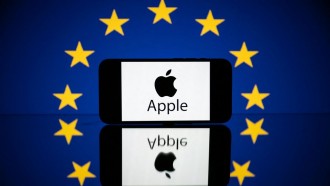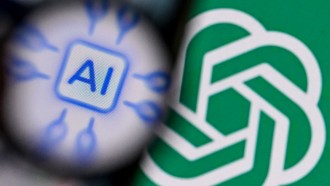A program that provides internet access to disadvantaged Americans is facing a funding shortfall, which experts warn may disproportionately impact young people and minorities.
The COVID-19 pandemic shed light on what experts call the digital divide: a lack of access to affordable and reliable high-speed internet. The need for virtual services in 2020 forced Congress to act and pass laws such as the 2021 Infrastructure and Jobs Act, which aims to ensure all Americans have access to speedy internet, per a White House memo. It is through this 2021 law that the Affordable Connectivity Program (ACP) was funded. Congress set aside $14.2 billion in subsidies to help low-income Americans get discounts of up to $30 per month or $75 per month for residents of Tribal Lands.
Many providers across the country didn't cover rural areas before the COVID-19 pandemic lockdowns because building the infrastructure necessary to make broadband available over larger areas with fewer people costs a lot of money.
However, the Infrastructure and Jobs Act allocated $401 million for broadband infrastructure expansion in rural areas. The ACP then allowed customers to save money on internet bills in the regions that didn't provide the service before the program was created.
The ACP was accessible to households with incomes at or below 200% of the federal poverty guidelines, individuals who were part of the Supplemental Nutrition Assistance Program, Medicaid beneficiaries, and recipients of Pell Grants.
According to American University, students from marginalized communities have less access to reliable internet than their privileged peers. Even students with the internet may be in a home with only one device for the entire family.
Per AU's findings, up to 27% of Indigenous students, 19% of Black students, and 17% of Latinx/Hispanic students didn't have reliable internet service as of December 2020. Rates for white students were at 7%, and Asian students were at 3%.
Twenty million people enrolled in the ACP, according to Pew Research. These customers paid an average rate of $40 per month, saving money to help families, Medicaid recipients, and working-class college students take care of other basic needs.
However, funding for the ACP is beginning to run out because Congress hasn't allocated anything more since its allocations in 2021. The successful program froze applications for new enrollees on February 7 at 11:59 pm ET.
Pat Millen is the co-founder and President of Eliminate the Digital Divide (ED2). The organization is based in Davidson, North Carolina, and works to improve access to digital tools in both North and South Carolina. ED2 works with school systems to look for families in need and with partner organizations to provide laptops, tech support, and digital literacy education. To Millen, the ACP could dampen the progress to decrease the digital divide.
"Covid was such a trauma for individuals, families, entire communities, and our nation," he said. "But one of the brightest lights revealed during that interval shone on the immense power that access to computers and affordable broadband could become for those who had yet to access the power of those tools. ACP was designed to have an immediate effect. Those who benefitted from it quickly achieved equitable access to information and data that previously was elusive, unavailable, or too expensive. ACP had an outsized positive impact with BIPOC communities in the Carolinas, too many of whom were priced out of data plans before."
COVID-19 was the beginning of a different way to work and visit doctors.
Marty Newell is the Chief Operating Officer of the Center for Rural Strategies, an organization that works to improve rural communities' economic and social conditions. He says, "We rolled out services in places that had only one provider and reached rural and urban neighborhoods that were once passed over because they were poor or mainly people of color. That made service available in more places, but it was going to be out of reach for poor people."
Indeed, the ACP program alleviated financial concerns. Newell also adds, "This expansion allowed for great participation. Folks were now not as far behind in virtual classrooms and were able to get to virtual doctor's visits."
For now, many organizations around the country are asking people to call their Members of Congress and let them know why it's crucial to continue funding the program.
Specific individuals are required to withdraw from the program, while others may remain enrolled. The Federal Communications Commission also operates a separate program called Lifeline that can still help qualifying individuals get affordable phone and internet service.
Ingrid Cruz is a freelance writer covering e-commerce, pop culture, and our relationship to all things internet. You can follow her work and adventures on X (formerly Twitter) or Instagram at ingridquerubina.









